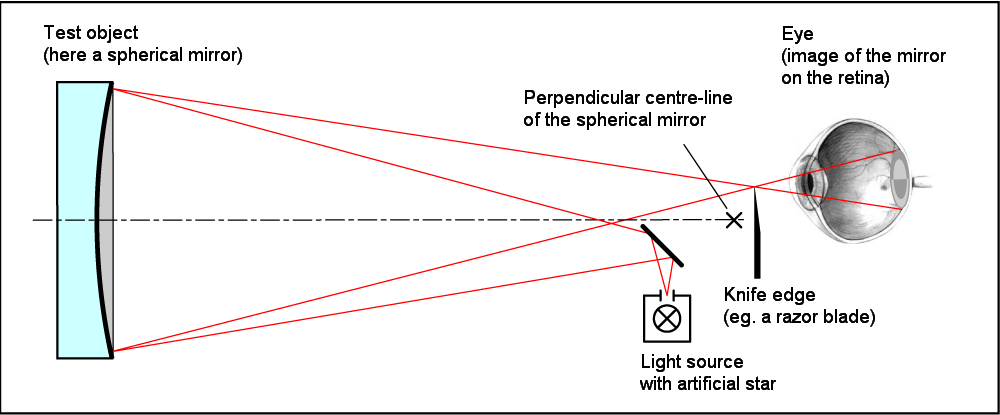Introduction to Mirror-Testing
Have you ever caught a glimpse of your pet staring at itself in the mirror, seemingly lost in thought? It’s a fascinating sight that raises questions about self-awareness. The concept of mirror testing has intrigued scientists and animal lovers alike for decades. This simple yet profound test seeks to determine whether animals can recognize themselves on reflective surfaces. But what does passing or failing this test say about their cognitive abilities? Join us as we embark on a journey through the intriguing world of mirror-testing, exploring its history, implications, and how it shapes our understanding of animal intelligence. Prepare to uncover some surprising insights along the way!
The History of Mirror-Testing and its Purpose
The mirror test, developed in the 1970s by psychologist Gordon Gallup Jr., sought to evaluate self-awareness in animals. By placing a mark on an animal’s body where it cannot see without assistance, researchers use mirrors as a tool for assessment.
If the animal recognizes itself and attempts to investigate or remove the mark, it indicates a level of self-recognition. This groundbreaking approach shifted how scientists viewed cognitive abilities beyond mere instinctive behaviors.
Initially focused on primates, the test has expanded to various species. The purpose remains consistent: understanding consciousness across different forms of life. Each successful recognition raises questions about emotions and thought processes in creatures we share our planet with.
Over time, mirror testing has sparked curiosity and debate regarding what it truly means to be “self-aware.” It continues to serve as a vital component in examining intelligence among diverse species while challenging human-centric perspectives on cognition.
Examples of Animals with Self-Awareness

Some animals demonstrate remarkable self-awareness through mirror testing. Chimpanzees are often at the forefront of these studies. When they see themselves in a mirror, they show signs of recognition by touching marked areas on their bodies.
Dolphins also shine in this realm. These intelligent marine mammals have been known to identify themselves and even cooperate with researchers during tests involving mirrors.
Elephants offer another compelling example. They can recognize themselves and display curiosity about their reflections, indicating a level of cognitive complexity that we’re only beginning to understand.
Magpies are perhaps the most surprising contenders. In experiments, these birds have shown an ability to check for marks placed on them while looking into a mirror, highlighting cognitive skills once thought unique to mammals.
These examples illustrate just how diverse and fascinating animal intelligence can be across species.
Controversies Surrounding Mirror-Testing
Mirror testing has sparked significant debate in the scientific community. Critics argue that this method may not accurately assess self-awareness across different species.
The test often relies on visual recognition, which can vary greatly among animals. For instance, some creatures might rely more on scent or sound for their interactions with the world. This raises questions about whether passing the mirror test truly indicates self-awareness or simply a response to an unfamiliar stimulus.
Cultural and environmental factors also play a role. Animals raised in captivity may behave differently than those in their natural habitats. These differences complicate interpretations of results obtained through mirror-testing.
Moreover, there’s skepticism about what “self-awareness” means itself. Some researchers contend that it is too anthropocentric—projecting human traits onto other species can lead to misleading conclusions regarding animal cognition and intelligence.
Mental Capabilities of Animals Based on Mirror-Testing Results
Mirror testing has provided fascinating insights into the mental capabilities of various animal species. The ability to recognize oneself in a mirror suggests a level of self-awareness, previously thought to be exclusive to humans and some primates.
For instance, elephants exhibit remarkable cognitive skills. They not only pass the test but also show empathy by investigating their reflection when presented with markings on their bodies. This indicates an understanding that they exist as separate entities.
Dolphins are another remarkable example. Their playful interactions with mirrors reveal sophisticated social cognition and awareness. Such behaviors indicate advanced problem-solving abilities and emotional intelligence.
Birds like magpies have also demonstrated self-recognition, challenging stereotypes about avian intelligence. These findings push us to reevaluate our assumptions regarding consciousness across species boundaries.
Each instance adds depth to our comprehension of animal minds, suggesting a rich tapestry of emotional and intellectual depth waiting to be explored further.
Implications and Applications of Mirror-Testing
Mirror testing offers fascinating insights into animal cognition. Understanding self-awareness in non-human species can reshape our perceptions of intelligence across the animal kingdom.
The implications extend beyond mere curiosity. They influence how we approach animal welfare and conservation efforts. Recognizing that certain animals are more sentient than previously thought can lead to better treatment and protection strategies.
Additionally, mirror-testing findings have potential applications in education and enrichment programs for captive animals. Tailoring environments based on cognitive abilities encourages natural behaviors, thus enhancing their overall well-being.
As researchers explore the nuances of self-recognition, they might develop new methodologies to assess mental capabilities in various species. This could pave the way for innovative studies that challenge existing paradigms of intelligence within ecological contexts.
Such advancements may also impact fields like robotics or artificial intelligence by providing inspiration drawn from nature’s diverse problem-solving techniques observed through mirror-testing outcomes.
Future Directions for Research
The future of mirror testing holds exciting possibilities. Researchers are exploring new methodologies that could broaden our understanding of self-awareness in animals.
Innovative technologies, such as virtual reality and advanced imaging techniques, may help unravel the complexities behind how different species perceive themselves. These tools can provide deeper insights into cognitive processes beyond visual recognition.
Cross-species comparisons will also enhance studies on animal intelligence. By examining various taxa, scientists can identify evolutionary patterns related to self-awareness.
Ethical considerations remain paramount as research expands. Ensuring humane treatment and minimizing stress during testing must be prioritized for valid results.
Collaboration between disciplines—such as psychology, zoology, and neuroscience—can foster a more integrated approach to studying cognition across the animal kingdom. This holistic view may lead to groundbreaking discoveries about intelligence in ways we have yet to imagine.
Conclusion
The exploration of mirror-testing opens a fascinating window into the cognitive abilities of various animal species. As we delve deeper, discoveries continuously challenge our understanding.
Self-awareness is a complex trait that many creatures might possess in unexpected ways. This ongoing research highlights the intricacies of animal intelligence beyond what conventional tests have revealed.
Future studies are crucial for uncovering hidden layers of cognition in animals. Each finding could reshape how we perceive our fellow beings on this planet.
As science advances, it also invites us to rethink ethical considerations regarding animals and their treatment. Acknowledging their mental capacities can lead to more compassionate interactions with them.
This journey promises not just answers but also deeper questions about consciousness itself, sparking curiosity among researchers and enthusiasts alike. The quest for knowledge continues, pushing boundaries further than we ever imagined possible.
Introduction to Mirror-Testing
Mirror testing is a fascinating method used to assess self-awareness in animals. At its core, it involves placing an animal in front of a mirror and observing their reactions.
The idea is simple yet profound: does the animal recognize itself? This concept has implications that stretch beyond mere curiosity. It taps into our understanding of consciousness and cognitive abilities across species.
Animals often display varied behaviors when confronted with their reflection. Some may show signs of recognition by inspecting or touching marks placed on their bodies—marks they can only see through the mirror. Others might react as if they are encountering another creature entirely.
This test opens up discussions about intelligence, social behavior, and emotional depth among animals. As scientists delve deeper into this enigmatic realm, mirror-testing continues to challenge our perceptions of non-human minds.
The History of Mirror-Testing and its Significance
Mirror-testing emerged in the 1970s, pioneered by psychologist Gordon Gallup Jr. His groundbreaking work aimed to explore self-recognition in animals. The test involves placing a mark on an animal where they cannot see it without a mirror.
If the animal uses the mirror to investigate and possibly remove the mark, it suggests some level of self-awareness. This simple setup has profound implications for how we understand cognition across species.
The significance of this testing method goes beyond curiosity. It challenges long-held beliefs about consciousness and intelligence in non-human beings. The results have sparked debates among scientists, philosophers, and animal rights advocates alike.
Many consider passing the mirror test as evidence of advanced mental capabilities, while others question its validity based on factors like species-specific behaviors or environmental influences. As research progresses, our perception of intelligence continues to evolve alongside these findings.
Animals That Have Passed the Mirror Test
Certain animals have shown remarkable self-awareness bypassing the mirror test. One of the most famous examples is the great apes, including chimpanzees and orangutans. These intelligent primates have demonstrated an understanding that the reflection in a mirror represents themselves.
Dolphins also join this elite group. Their playful interactions with mirrors suggest they recognize their own images, showcasing advanced cognitive abilities.
Elephants are another surprising contender. When given access to mirrors, they engage in behaviors indicating self-recognition, such as examining parts of their bodies previously unseen.
Even some birds like magpies have astounded researchers by showing similar capabilities. They can identify marks placed on them while looking at their reflections.
These findings challenge our perceptions of intelligence across species and hint at a broader spectrum of consciousness in the animal kingdom.
Controversies Surrounding the Validity of Mirror-Testing

The validity of mirror testing has sparked considerable debate among researchers. Critics argue that the test may not accurately measure self-awareness in animals.
Some species simply do not rely on visual cues for their perception of self. For instance, many animals have different sensory modalities that shape their understanding of the world.
Additionally, cultural and environmental factors might influence an animal’s reaction to a mirror. An unaccustomed setting could lead to stress or confusion, skewing results.
There’s also concern about anthropomorphism—the tendency to attribute human traits to animals—which can distort the interpretation of behaviors observed during testing.
As science progresses, new methods are being explored alongside mirror-testing. Understanding cognitive abilities requires a multifaceted approach that goes beyond reflection and mirrors alone.
Recent Studies and Discoveries in Mirror-Testing
Recent studies in mirror testing have unveiled fascinating insights into animal cognition. Researchers have expanded the scope of subjects, including lesser-known species like elephants and fish. These investigations are shifting our understanding of self-awareness across the animal kingdom.
One groundbreaking study involved cleaner wrasses, a type of reef fish. When presented with a mirror, these clever creatures demonstrated behaviors indicative of self-recognition—an unexpected result that challenged previous assumptions about cognitive abilities in non-mammalian animals.
Additionally, studies on chimpanzees and dolphins continue to shed light on their complex social interactions. Observations reveal that these intelligent beings exhibit nuanced responses when using mirrors as tools for communication or problem-solving.
As technology advances, scientists employ innovative methods such as eye-tracking and neuroimaging to explore how different species perceive themselves. This new wave of research promises to deepen our appreciation for the richness of animal intelligence and consciousness.
Implications of Animals Passing the Mirror Test
Animals passing the mirror test challenge long-held beliefs about cognitive abilities. This breakthrough suggests that self-awareness isn’t solely a human trait. Various species, from elephants to magpies, demonstrate rich emotional and social lives.
Understanding this capacity for self-recognition impacts how we perceive animal rights and welfare. Animals with such intelligence may warrant greater protection in habitats under threat or captivity.
Moreover, these findings open doors for studying communication among species. If animals recognize themselves, they might also grasp their relationships with others more profoundly.
Research into mirror-testing can redefine our interaction with wildlife. It encourages deeper empathy and respect towards various creatures sharing our planet. The implications extend beyond mere academic interest; they invite us to reconsider ethical practices surrounding animals in entertainment and research settings.
These insights could drive conservation efforts as well, emphasizing the value of preserving intelligent species at risk of extinction.
Conclusion: The Complexity of Animal Intelligence and Future Research Directions
The exploration of mirror testing has opened up fascinating avenues in our understanding of animal intelligence. As we delve deeper into the cognitive abilities of various species, it becomes clear that self-awareness is a complex trait not easily defined or measured.
Animals like dolphins, great apes, and elephants have demonstrated their capacity to recognize themselves in a mirror, challenging traditional views on consciousness. Yet the results are not universally accepted across all species tested. The ongoing debates highlight the need for more nuanced approaches when interpreting these findings.
Recent studies suggest that context matters significantly in mirror-testing scenarios. Different animals may possess alternative forms of awareness that aren’t necessarily captured by traditional testing methods. This expands our view beyond mere reflection and encourages researchers to rethink how they assess cognition.
Moreover, understanding how different environments shape animal behaviors can provide critical insights into their mental capabilities. Interdisciplinary research combining psychology, ethology, and neuroscience could pave the way for innovative methodologies that better address questions about self-recognition and intelligence.
As new technologies emerge and methodologies evolve, there’s potential for groundbreaking discoveries ahead. The complexity of animal intelligence continues to challenge our perceptions while inviting us to appreciate the diverse ways life manifests conscious thought across species. Continued inquiry will only deepen our understanding of these remarkable beings with whom we share this planet.



